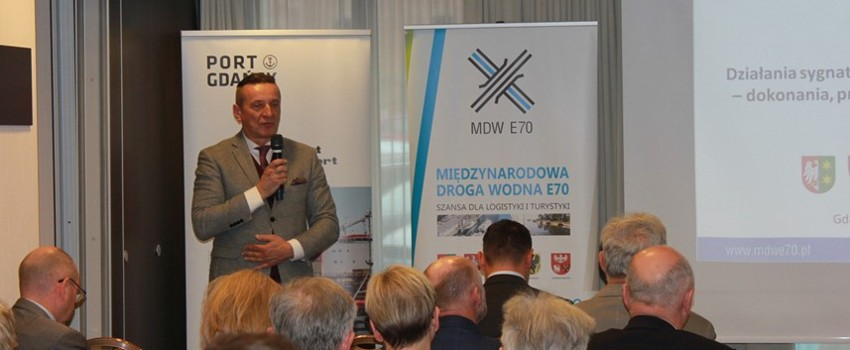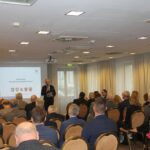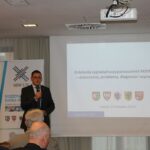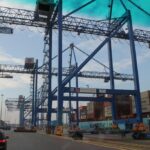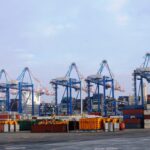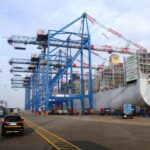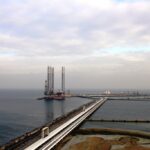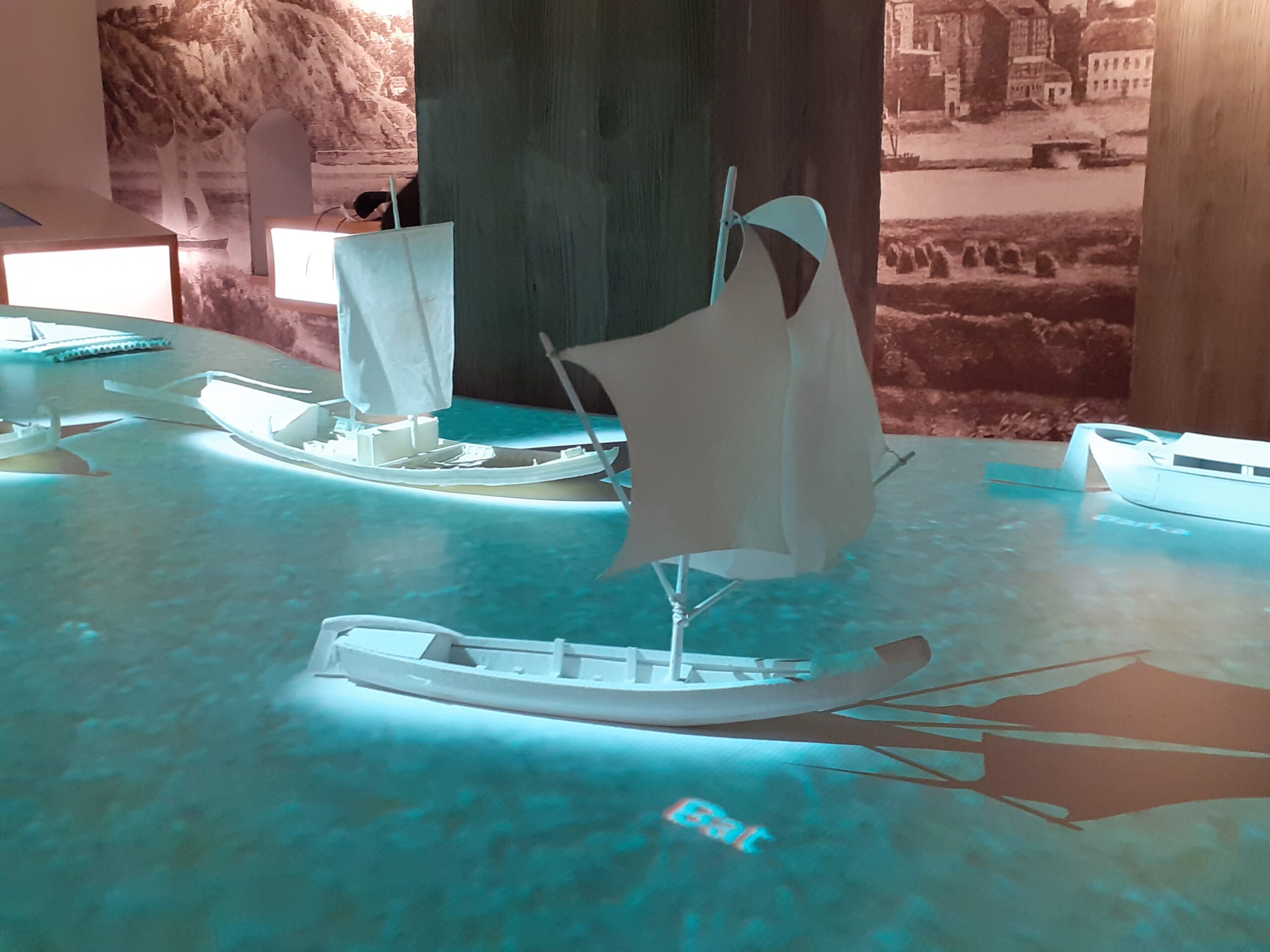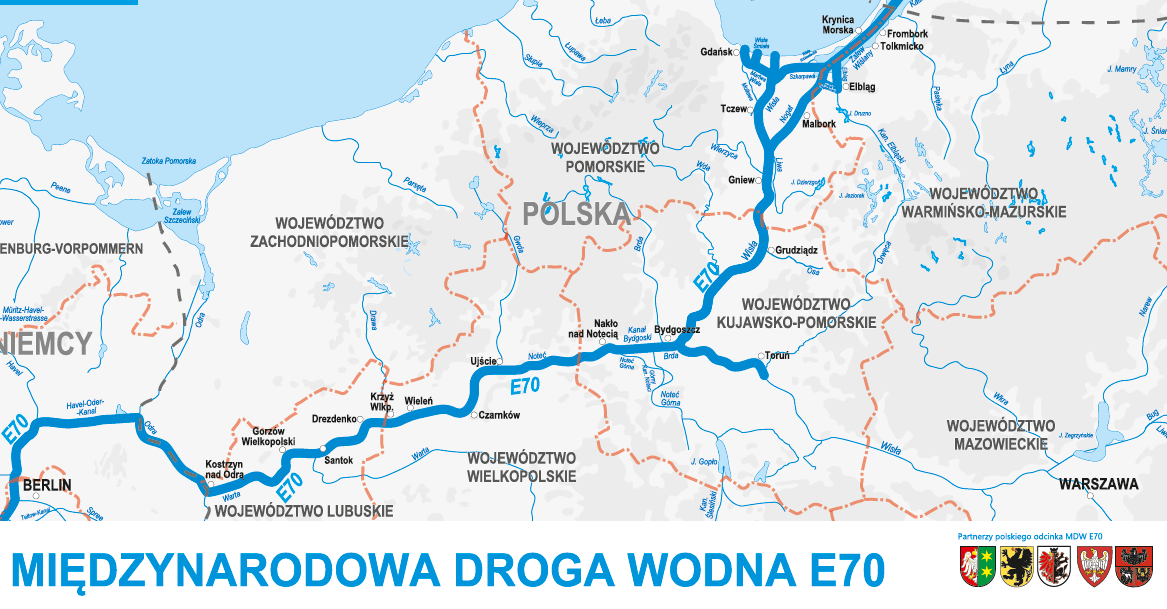On 27-28 November 2019, Gdańsk hosted the conference “Development of waterways in Poland”, organised by signatories of the agreement on revitalisation of the International Waterway E70, i.e. the Pomorskie, Kujawsko-Pomorskie, Wielkopolskie, Warmińsku-Mazurskie, and Lubuskie Voivodeships. The meeting was attended by experts in water management, as well as in revitalisation and management of inland waterways.
The aim of the meeting was to present the current work on revitalisation of inland waterways in Poland, initiated by the Ministry of Maritime Economy and Inland Navigation, the National Water Management Authority, Port of Gdańsk Authority SA, and regional governments.
In his welcome speech, Mr Leszek Bonna, Deputy Marshal of the Pomorskie Voivodeship, pointed out that the meeting aimed at explaining important aspects of waterway development in Poland, from tourism and culture, through issues of responsibility for the environment and local community, to the economy. Mr Lukasz Greinke, President of the Port of Gdańsk Port Authority, indicated that navigation on the Vistula and creation of a system of waterways is one of the port’s development priorities. Revitalisation of the Vistula along sections of the transport route aims not only at restoring effective navigation but first of all at increasing flood protection and enhancing opportunities for development of agriculture and the tourism industry.
In the first part of the conference, Mr Rafał Wasil of the Marshal’s Office of the Pomorskie Voivodeship presented the activities of signatories of the IWW E70 agreements, their achievements, problems and challenges they face. The strong belief in the appropriateness of initiatives for the development of inland waterways in Poland has become a premise for sustained, cross-regional cooperation for IWW E70. Owing to this cooperation, the first steps were made on the way to revitalising inland navigation and various types of accompanying business activity along the Polish section of IWW E70. At present, there are nearly 80 marinas along the Polish section of IWW 70, which is nearly twice as many as in 2010.
Mr Przemysław Żukowski of the Ministry of Maritime Economy and Inland Navigation spoke about plans and assumptions for the development of waterways in Poland. His presentation involved the results of a transport analysis, according to which estimated demand for inland transport on the Vistula is at a level close to 50 million tonnes of cargo. Conditions for meeting this aim are achieving an international navigability class of the Vistula waterway, operating of the Warsaw-Brest connection, and maintaining the current parameters of other waterways. He also mentioned a new financial perspective for the years 2021-2027, which may focus on continuation of projects from the 2014-2020 perspective on the Odra Waterway, but also on implementation of line and point investments aimed at eliminating bottlenecks and improving navigation safety, as well as on ensuring uninterrupted navigation along the longest possible river courses.
Mr Krzysztof Wrzosek, a representative of the Polish Water Management Authority, spoke about prospects for the realisation of the Siarzewo barrage. The schedule adopted foresees that the project is to be completed in December 2028. The estimated cost of this investment, depending on technical solutions employed, is PLN 3-5 billion. The second barrage on the Vistula is a very important investment project, not only due to increasing flood protection, but also because of the restoration of 500 ha of riparian forests and the construction of a hydroelectric power plant with a capacity of 80 MW. The construction of the barrage is also intended to affect the Vistula’s navigability.
An important topic of the conference was the presentation of routine maintenance activities, operation and preparation for navigation of the waterway on the Oder – Vistula – Vistula Lagoon connection. Ms Beata Musielska, Deputy Director for Floods and Droughts of the Regional Water Management Board in Poznań, discussed the stretch of the Warta River, which is part of the MDW E70 on a 68.2 km long section. There are no restrictions for navigation on the route, although there may occur local shallow transit depths at low water levels, fluvial deposits or shoals. She stressed that maintenance work on the navigable route includes marking the waterway (repairs, refilling of signs), removing trees and blockages, sweeping, mowing of the riverbed, removing sandbanks and shallows, as well as inspecting and repairing regulation-related structures. Ms Agnieszka Siłacz, Deputy Director for Floods and Droughts of the Regional Water Management Board in Bydgoszcz, characterised the navigation parameters of a 211-kilometre stretch of IWW E70, i.e. the Bydgoszcz Canal and the Noteć river (both canalized and free-flowing sections). Apart from routine maintenance work (similar to that on the Warta river), the most important projects carried out in 2019 included dredging of the Łobżonka river mouth, removal of a sandbed downstream of the Krzyż barrage, dredging work on approaches to sluice gates, and completion of comprehensive repairs of the Okole sluice. Ms Agnieszka Struczyńska, the Manager of Planning and Coordination of Operations at the Regional Water Management Board in Gdańsk, presented the navigation conditions, including limitations on boating in the Lower Vistula and Elbląg Canal regions, as well as working hours of locks and their adaptation to tourist traffic. The main maintenance work on navigable routes includes regular weekly corrections of the route (especially the Vistula River) together with measurements of the smallest depths (shoals), bathymetric measurements for planned overhaul of regulation facilities, comprehensive measurements of the navigable route together with inspection of its markings, sweeping with marking or removal of obstacles on the route, but also providing assistance to waterway users (piloting in difficult sections). As far as investments are concerned, groynes on the Vistula are successively renovated. Groynes are an important component of flood protection and maintenance of the navigable route. They not only concentrate the current, which facilitates the movement of rock debris and ice down the river, but also prevent blockages and provide navigational depth for boats and icebreakers.
In her speech, Ms Barbara Bradke-Sobieniak, Director of the Investment Projects Department of the Port of Gdańsk Authority SA, discussed the most important investments in the port. The over PLN 1 billion of the current overall investment includes modernisation of the waterway, expansion of the quays and improvement of conditions of navigation in the Inner Port of Gdańsk, expansion of the North Quay, expansion and modernisation of the road and rail network at the Outer Port of Gdańsk, as well as expansion and modernisation of the core network hubs at the Port of Gdańsk in terms of road and railway infrastructure. In addition, she discussed the concept of building a Central Port at the Port of Gdańsk, with an estimated value of PLN 11 billion.
The second part of the conference started with a speech by Prof. Zygmunt Babiński of Kazimierz Wielki University in Bydgoszcz. The topic “Environment, climate change and inland navigation” was presented by this scientist using the example of the Vistula. In order to effectively counteract drought and lack of water, there is an urgent need to improve the hydrological condition of Poland by building new reservoirs on the Vistula. The expert stressed that the most effective way to store water for areas affected by water shortages is to build a cascade along the lower Vistula, i.e. a complex of dams in the lower Vistula, from Warsaw to Gdańsk.
The next part of the debate focused on issues related to using the potential of the Vistula and other rivers in the Kujawsko-Pomorskie Voivodeship, as well as activities undertaken by the Voivodeship government and its partners to revitalise waterways.
Ms Aleksandra Cilińdź of the Port of Gdańsk Authority SA discussed the progress of work on a Feasibility Study for comprehensive development of the E40 and E70 international waterways in Poland. She presented a long list of developed variants along with possible optional routes of particular sections – northern, central and southern. Depending on the selected variant, the planned time of implementation is 42 years in order for the waterway to achieve an international navigation class and a length of about 780 km (port of Gdańsk – port of Elbląg – Warsaw – Brest). As a result, 20 barrages would be built, with a total energy capacity of 620 MW. The estimated investment cost would be PLN 51 billion.
A study of the course of the International Waterway E70 on the Oder-Vistula section was presented by Stanisław Wroński, Representative of the Marshal of the Kujawsko-Pomorskie Voivodeship for waterways. The purpose of the study is to evaluate the possibility of achieving parameters of at least class IV along International Waterway (MDW) E70 on the Oder-Vistula section, in the Lubuskie, Wielkopolskie and Kujawsko-Pomorskie voivodeships. So far, an analysis of conditions for the functioning of the Oder-Vistula waterway and its adaptation to AGN Convention requirements has been drawn up. At present, an analysis of spatial, environmental and physiographic conditions of the selected area is under preparation.
Naturally, topics presented at the conference also included aspects of water tourism. These issues were addressed by Mr Wojciech Skóra, Director of the PTTK (Polish Tourist and Sightseeing Society) Water Tourism Centre. The expert presented tourist attractions of the Polish section of IWW E70 and difficulties encountered by boaters along the water route, such as low water levels and overgrown river beds. He drew attention to safety issues and the convenience of stopping in locks.
There was also mention of a system of personnel training for inland navigation. As was stressed by Mr Dawid Szatten, Deputy Director of Education of the Institute of Geography at Kazimierz Wielki University in Bydgoszcz and Coordinator of the Information and Promotion Centre for Inland Waterways at the same university, there are more than 2100 students at secondary level in 9 schools in Poland studying to become inland navigation and logistics technicians in the future. As far as academic knowledge of inland navigation is concerned, it can be developed at universities in Bydgoszcz, Gdynia, Szczecin and Gdańsk.
On the second day of the conference, a study visit to the Port of Gdańsk SA took place. During the cruise, the participants had an opportunity to see for themselves the Nabrzeże Mew (Seagull Quay) and the partially modernised Nabrzeże Obrońców Poczty Polskiej (Polish Post Office Defenders Quay). The guests then proceeded to DCT Gdańsk, which is the largest and fastest-growing Polish container terminal and the only deep-water terminal in the Baltic Sea region which accommodates ships directly from the Far East. The terminal supports Polish import, export, transit, as well as sea transit and is constantly developing. In 2018, DCT Gdańsk terminal handled almost 1.9 million TEUs, providing regular services to the largest container ships in the world. In 2019, transshipments at DCT Gdańsk will exceed 2.0 million TEUs. The visitors had an opportunity to see the loading of an Asian container ship. Thereafter, the participants went to the Harbour Master’s Office at the Northern Port, where specialists of the Port of Gdańsk Authority S.A. presented projects currently underway and already completed. Also under discussion were topics of construction work carried out in the inner port, as well as work related to the road and rail infrastructure leading directly to the port. Further investment plans were also presented, including assumptions for work in the area of the Górniczy Basin (Miner’s Basin), involving development of transport infrastructure leading to the Basin. The participants of the meeting were acquainted with the progress of work on construction of the Central Port – the largest project of the Port of Gdańsk.
The event provided an opportunity to learn about the views of various circles on using the potential of our rivers. The speakers’ presentations confirmed that the development of rivers concerns a wide range of stakeholders.
Galeria zdjęć:

